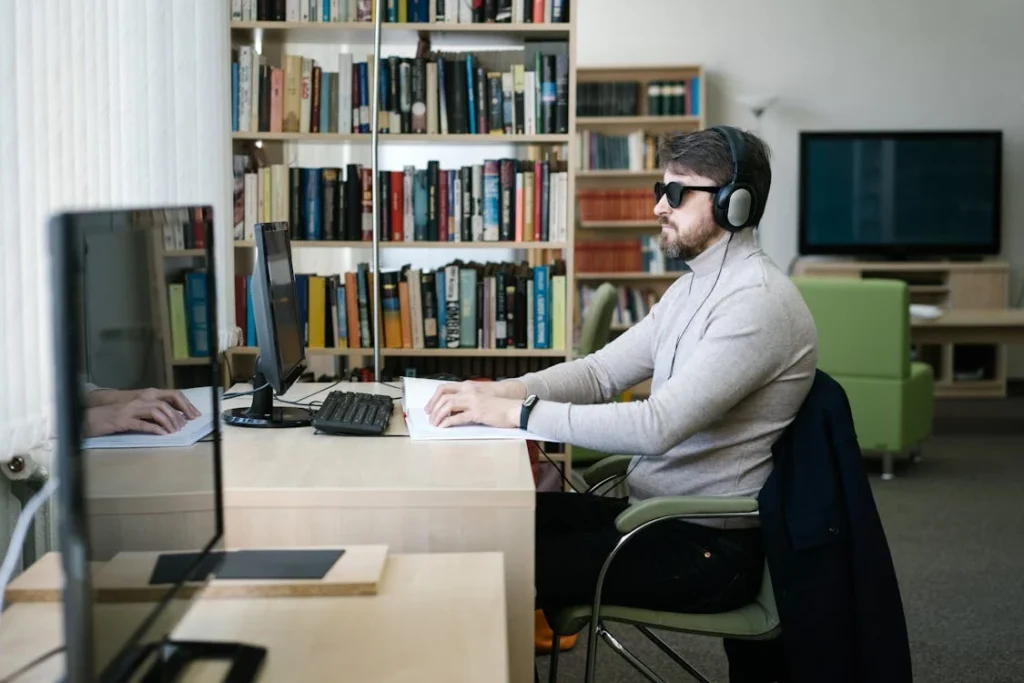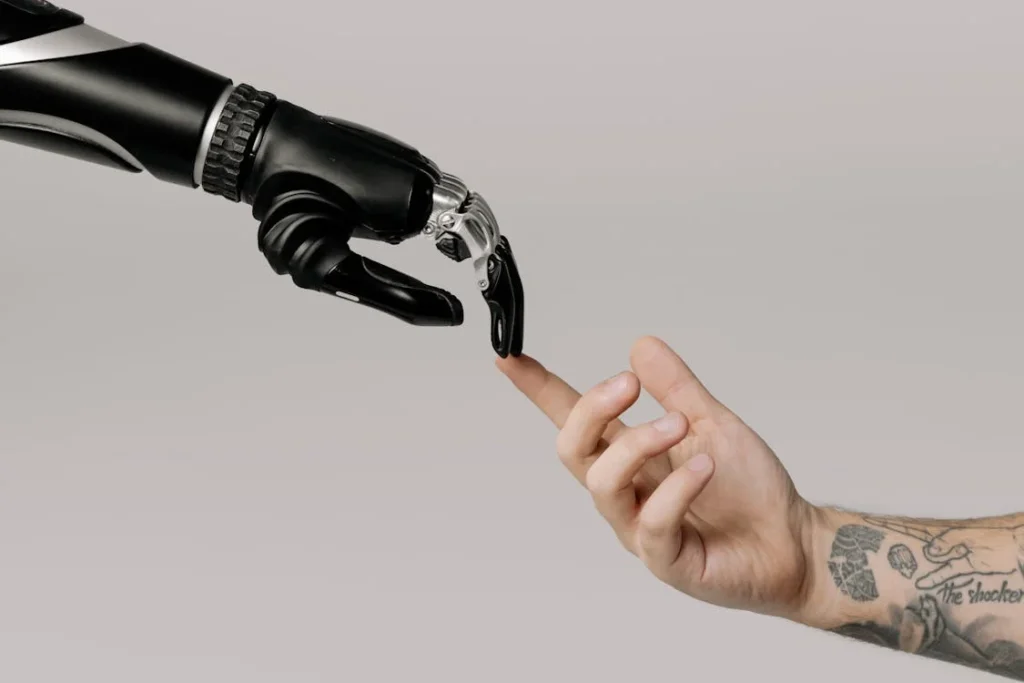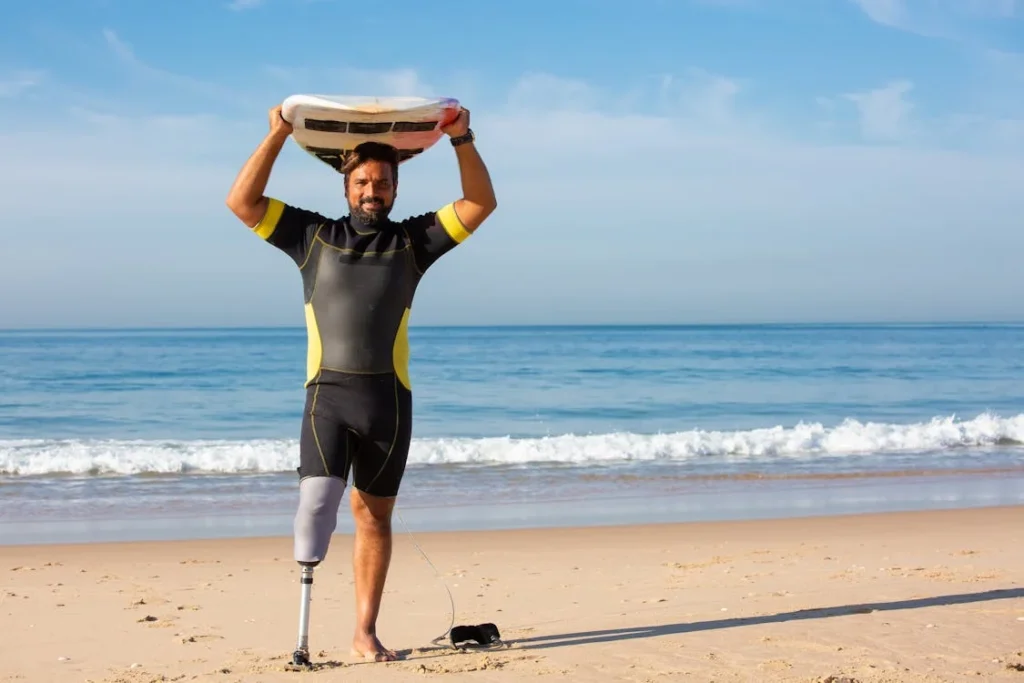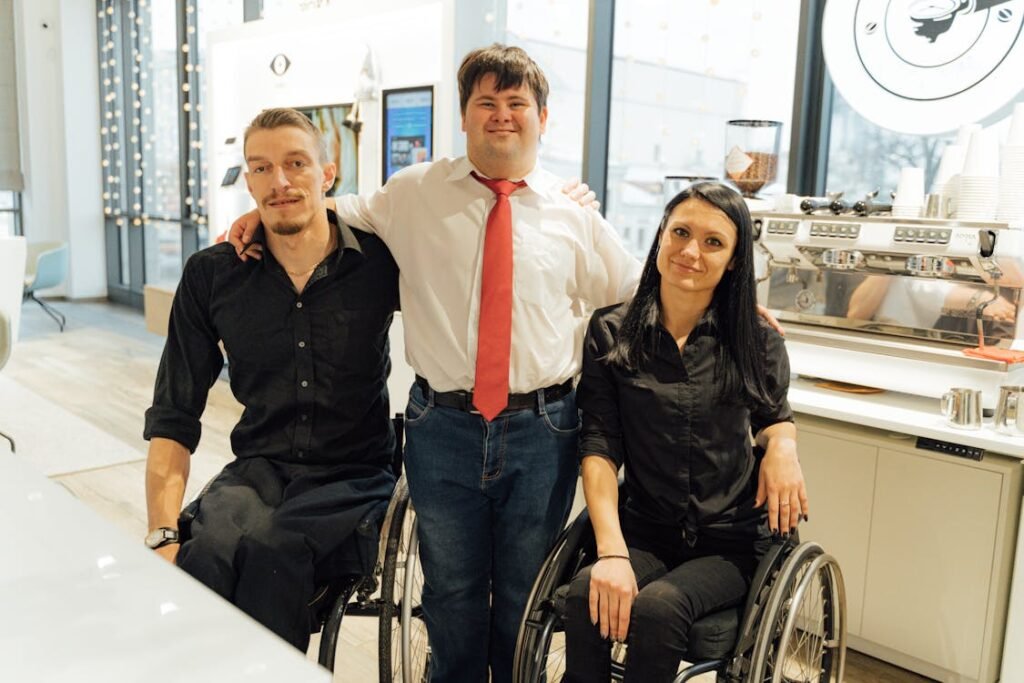Disability inclusion is not just a national issue—it is a global movement. Across the world, countries are working together to create more inclusive societies, learning from each other’s successes and challenges. From accessible infrastructure to employment opportunities, governments, organizations, and advocacy groups are sharing knowledge to improve the lives of people with disabilities.
International collaboration has led to innovative policies, better assistive technologies, and more inclusive education systems. Countries that have made significant progress in accessibility are helping others adopt similar strategies, ensuring that people with disabilities everywhere have the same opportunities and rights.
With globalization and digital connectivity, it has become easier for nations to exchange ideas on how to break down barriers for people with disabilities. Whether through government agreements, non-profit partnerships, or corporate initiatives, cross-cultural collaboration is shaping a more inclusive future for all.

How Countries Are Learning from Each Other on Disability Inclusion
Strengthening Disability Rights Through International Agreements
One of the most effective ways countries collaborate on disability inclusion is through international agreements and policies.
The United Nations Convention on the Rights of Persons with Disabilities (UNCRPD) is a landmark treaty that has united over 180 countries in their commitment to improving the lives of people with disabilities.
By signing this treaty, nations agree to create laws and policies that promote accessibility, equal opportunities, and protection from discrimination.
Countries that have successfully implemented disability-friendly laws often serve as models for others. For example, the Americans with Disabilities Act (ADA) in the United States has inspired similar legislation in other countries.
The ADA sets clear guidelines on accessibility in workplaces, public spaces, and digital platforms. Many nations have studied its framework to develop their own versions of disability rights laws, ensuring that people with disabilities have equal access to jobs, education, and public services.
Similarly, European countries have collaborated to establish common accessibility standards for transportation, public buildings, and digital content.
The European Accessibility Act, for instance, ensures that all member states follow the same guidelines for making products and services more accessible.
By sharing research, legal frameworks, and implementation strategies, countries across Europe are making collective progress toward disability inclusion.
Building Accessible Infrastructure Through Shared Knowledge
Creating accessible cities requires careful planning, investment, and knowledge-sharing. Countries with well-developed accessibility programs are now helping others improve their infrastructure to accommodate people with disabilities.
Japan, known for its highly accessible public transportation system, has shared its expertise with other nations looking to make their metros, buses, and train stations more disability-friendly.
Features like tactile paving for visually impaired travelers, elevators at every station, and voice-assisted ticketing machines have been adopted in cities worldwide.
Scandinavian countries have also set a global standard for inclusive urban planning. Cities like Stockholm and Oslo have designed streets, buildings, and public spaces with accessibility as a priority rather than an afterthought.
Their success has encouraged other countries to rethink urban development, ensuring that new infrastructure projects consider the needs of people with disabilities from the beginning.
Developing nations are also benefiting from cross-cultural collaboration. Countries with advanced accessibility programs are sharing cost-effective solutions that work even in regions with limited resources.
Simple yet impactful changes, such as low-cost wheelchair ramps, braille street signs, and mobile apps for navigation assistance, are being implemented in countries where full-scale accessibility projects may not yet be feasible.
Advancing Assistive Technology Through Global Innovation
The rapid growth of technology has opened new doors for disability inclusion, and international collaboration is playing a key role in driving innovation.
Countries are working together to develop and distribute assistive devices that enhance mobility, communication, and independence for people with disabilities.
One area of significant progress is prosthetic technology. Nations with strong research and development capabilities, such as Germany, the United States, and Japan, have been sharing their advancements with countries looking to expand their prosthetic services.
Open-source designs for 3D-printed prosthetic limbs have made it easier for developing nations to provide affordable solutions to people in need.
In India, organizations like Robobionics are working to create cost-effective, high-quality prosthetics that match international standards.
By collaborating with research institutions and global partners, Indian innovators are ensuring that advanced prosthetic solutions are accessible to more people, particularly in rural and underserved communities.
Similarly, the rise of smart assistive technology—such as AI-powered speech recognition, wearable exoskeletons, and brain-computer interfaces—has been driven by cross-border research.
Universities, tech companies, and disability organizations from multiple countries are pooling resources to develop next-generation assistive tools that improve daily life for people with disabilities.

The Role of Education and Employment in Global Disability Inclusion
Creating Inclusive Education Systems Through International Cooperation
Education is a fundamental right, yet many children with disabilities around the world still face barriers in accessing quality schooling.
Countries that have developed strong inclusive education models are now working with others to share their strategies and create more accessible learning environments globally.
Finland, for example, is known for its highly inclusive education system, where students with disabilities learn alongside their peers in mainstream classrooms.
The country has invested in teacher training, personalized learning plans, and adaptive technologies to ensure that all students receive the support they need.
This model has inspired similar initiatives in other nations, particularly in developing countries looking to improve their special education programs.
India, through initiatives like the Inclusive Education for Disabled at Secondary Stage (IEDSS) program, has been working to integrate children with disabilities into mainstream schools.
However, challenges such as a lack of trained teachers and accessible school infrastructure remain. By learning from countries with more established inclusive education policies, India and other developing nations can adopt best practices to create a more supportive learning environment for students with disabilities.
Another example of international collaboration in education is the partnership between universities in Europe and Africa to promote disability-friendly higher education.
Programs like the African Disability Rights Yearbook bring together researchers, educators, and disability advocates from multiple continents to share research, teaching methodologies, and policy recommendations.
This knowledge-sharing ensures that students with disabilities receive equal opportunities in education, regardless of where they live.
Expanding Employment Opportunities Through Global Initiatives
Employment remains one of the biggest challenges for people with disabilities worldwide. Many companies still have outdated hiring practices that exclude qualified candidates simply because of their physical or cognitive differences.
However, cross-cultural collaboration is helping to change this by promoting inclusive hiring practices across industries.
One successful model is Germany’s dual vocational training system, which combines classroom education with on-the-job training.
This system has been adapted in several other countries to help individuals with disabilities develop job skills while gaining real-world work experience.
By offering tailored training programs and employer incentives, Germany has created a system where people with disabilities are integrated into the workforce more effectively.
The UK’s “Disability Confident” scheme is another initiative that has gained international attention. It encourages businesses to actively recruit, retain, and promote employees with disabilities by offering government support, training resources, and recognition for inclusive hiring practices.
Countries like Australia and Canada have taken inspiration from this model, implementing similar programs to encourage disability-inclusive workplaces.
In developing nations, international organizations like the International Labour Organization (ILO) are working with governments and businesses to create more accessible workplaces.
By providing technical assistance, funding for workplace adaptations, and training on disability rights, these collaborations are helping to break down employment barriers and create sustainable job opportunities for people with disabilities.
Entrepreneurship and Remote Work as Global Solutions
The rise of remote work and digital entrepreneurship has opened up new possibilities for people with disabilities worldwide. Countries with strong technological infrastructures, such as the United States and South Korea, have developed online platforms that make remote jobs more accessible.
These platforms connect individuals with disabilities to employers who offer flexible work arrangements, ensuring that physical limitations do not prevent them from building successful careers.
Many disability influencers and advocates are also using social media and digital marketing to create their own businesses.
From e-commerce ventures to content creation, individuals with disabilities are proving that entrepreneurship can be a powerful tool for economic independence. By sharing their success stories and strategies, they are helping others around the world explore similar opportunities.

The Role of Cultural Exchange and Advocacy in Disability Inclusion
How Cultural Exchange Programs Promote Disability Awareness
Cultural exchange programs have long been a tool for fostering understanding between nations, and they are now playing a crucial role in disability inclusion.
These programs allow disability advocates, educators, policymakers, and entrepreneurs to visit other countries, experience different accessibility models firsthand, and bring back valuable knowledge to their own communities.
One example is the U.S. State Department’s “Professional Fellows Program,” which has connected disability advocates from countries like India, Brazil, and Kenya with experts in the United States.
Participants learn about disability policies, assistive technology, and inclusive business models, then apply that knowledge to improve accessibility in their home countries. Such programs create a ripple effect, where small-scale initiatives lead to larger systemic changes over time.
Similarly, Japan has hosted international forums on disability inclusion, inviting experts from around the world to discuss accessible infrastructure, employment policies, and assistive technology.
These forums have helped developing nations understand how to integrate accessibility into urban planning and public services.
Educational exchange programs have also become a platform for disability inclusion. Universities worldwide now offer exchange opportunities for students with disabilities, allowing them to study abroad in fully accessible campuses.
This exposure helps students gain confidence, independence, and skills that they can use to advocate for accessibility improvements in their home countries.
The Power of International Disability Advocacy Movements
Global disability movements are stronger than ever, thanks to increased collaboration between activists, organizations, and policymakers.
Social media and digital platforms have allowed disability rights campaigns to reach international audiences, leading to greater awareness and faster policy changes.
The #WeThe15 campaign, launched by the International Paralympic Committee and the United Nations, is a prime example. This global movement advocates for the rights of the 15% of the world’s population living with disabilities.
By uniting disability organizations from multiple countries, the campaign pushes for equal rights, accessibility, and representation on a global scale.
Another successful movement is the fight for airline accessibility. Disability influencers and advocates from different countries have shared stories of discrimination by airlines, leading to international pressure for better policies.
As a result, several major airlines have introduced improvements, such as better handling of mobility devices, accessible booking systems, and increased staff training on disability rights.
Non-governmental organizations (NGOs) are also playing a major role in international advocacy. Groups like Disability Rights International and the World Institute on Disability work across borders to push for policy changes, provide legal support, and fund accessibility projects in underserved communities.
Their efforts ensure that disability inclusion is not limited to wealthier nations but is a priority in every part of the world.
Bridging the Gap Between Developed and Developing Nations
While many developed countries have made significant progress in disability inclusion, developing nations often struggle with limited resources and infrastructure.
Cross-cultural collaboration helps bridge this gap by offering practical, low-cost solutions that can be implemented in any country.
For example, low-cost prosthetics developed in India using 3D printing technology have been shared with organizations in Africa, where access to expensive assistive devices is limited.
Similarly, community-based rehabilitation models from rural parts of Asia have been adapted in Latin America, ensuring that people with disabilities in remote areas receive the support they need.
By working together, countries can ensure that disability inclusion is not just a privilege for a few but a reality for all. The exchange of ideas, resources, and policies across borders is essential in creating a truly accessible world.

The Future of Global Collaboration on Disability Inclusion
The Role of Artificial Intelligence and Smart Technology
Technology is playing a key role in global efforts to improve disability inclusion, and artificial intelligence (AI) is at the forefront of this transformation.
Countries are sharing research and innovation to develop AI-powered assistive tools that help people with disabilities navigate daily life more independently.
One of the most promising advancements is AI-driven speech recognition technology, which enables individuals with speech impairments to communicate more easily.
Companies in the United States, Japan, and the UK have developed voice-to-text applications that use machine learning to recognize diverse speech patterns, making communication smoother for people with conditions like cerebral palsy or ALS.
These technologies are now being adopted in other regions, ensuring wider accessibility in education, workplaces, and public spaces.
AI is also being used to improve mobility solutions. Smart wheelchairs with navigation assistance, developed in Europe and North America, are now being introduced in Asia and Africa.
These devices use sensors and GPS to help users move through complex environments with minimal assistance. This kind of cross-cultural technological exchange ensures that assistive innovations reach people in all parts of the world, not just those in wealthier nations.
Global Efforts in Disability-Inclusive Disaster Response
Natural disasters and humanitarian crises disproportionately affect people with disabilities, yet many emergency response plans still fail to consider their specific needs.
In recent years, global collaboration has improved how countries prepare for and respond to disasters in an inclusive way.
Japan, known for its advanced disaster preparedness strategies, has shared its expertise in creating accessible evacuation plans with other countries.
By studying Japan’s approach, nations vulnerable to earthquakes, floods, and other disasters are learning how to design shelters, transportation, and communication systems that accommodate people with disabilities.
Similarly, after Hurricane Katrina in the U.S. exposed major gaps in emergency response for disabled individuals, disability advocates worked with international partners to develop more inclusive disaster preparedness strategies.
This collaboration has led to improved policies in multiple countries, ensuring that people with disabilities are not left behind during emergencies.
Organizations like the Red Cross and the United Nations have also been actively working to implement disability-inclusive humanitarian aid programs.
By partnering with local governments and disability advocacy groups, they ensure that food distribution, medical assistance, and shelter facilities are accessible to all.
Strengthening Legal Frameworks for Disability Rights
While many countries have their own disability laws, global cooperation is essential for strengthening legal protections and ensuring enforcement.
International disability rights organizations are working together to close legal gaps, especially in countries where disability discrimination is still widespread.
One significant area of progress is employment rights. Countries with strong workplace inclusion laws, like Canada and Germany, are helping others draft policies that encourage businesses to hire and support employees with disabilities.
Through knowledge-sharing initiatives, companies worldwide are learning how to create more inclusive work environments, from offering flexible schedules to ensuring office spaces are fully accessible.
Another key focus is accessibility in digital spaces. As the world becomes more dependent on online services, governments are collaborating to ensure that websites, mobile apps, and digital banking platforms are accessible to everyone.
The Web Content Accessibility Guidelines (WCAG), originally developed by international experts, are now being adopted as a global standard for making online content accessible to people with disabilities.
Moving Toward a Truly Inclusive Global Society
The future of disability inclusion depends on continued global cooperation. While progress has been made, challenges remain, particularly in low-income countries where accessibility is still lacking.
By strengthening international partnerships, sharing knowledge, and investing in inclusive technologies, nations can work together to ensure that no one is left behind.
Cross-cultural collaboration has already transformed disability rights, and as new challenges arise, this global exchange of ideas will remain crucial.
The goal is not just to improve accessibility in individual countries but to create a world where disability inclusion is the norm, not the exception.

The Influence of Sports and Cultural Events on Global Disability Inclusion
The Paralympics as a Platform for International Collaboration
Sports have long played a crucial role in promoting disability inclusion, and the Paralympics is one of the most significant global events driving change.
Countries competing in the Paralympics do more than showcase athletic talent—they share best practices on accessibility, adaptive sports training, and disability rights policies.
The Paralympics have influenced how nations invest in disability sports, infrastructure, and public perception. Countries with well-developed adaptive sports programs, like the UK, Canada, and Australia, have provided mentorship and funding to developing nations looking to establish their own disability sports leagues.
These collaborations help ensure that people with disabilities around the world have opportunities to participate in competitive and recreational sports.
Additionally, hosting the Paralympics often leads to long-term accessibility improvements. After the 2012 London Paralympics, the UK introduced lasting changes in public transportation, employment opportunities, and sports funding for people with disabilities.
When other nations see the impact of these investments, they are more likely to adopt similar policies, making sports a driver of accessibility advancements worldwide.
International Film, Arts, and Music Festivals Elevating Disability Representation
Cultural events are also playing an important role in cross-cultural collaboration on disability inclusion. International film festivals like the ReelAbilities Film Festival and the Cannes Disability Inclusion Program have introduced audiences to films made by or featuring people with disabilities.
These festivals create spaces where filmmakers, actors, and activists from different countries can share their experiences and discuss how the entertainment industry can become more inclusive.
Music festivals and theater productions are also breaking barriers by showcasing disabled performers. Events like the Edinburgh Festival Fringe have featured artists with disabilities, proving that talent knows no physical limitations.
These platforms encourage other countries to embrace inclusive arts, leading to more funding for accessible performance spaces, adaptive instruments, and disability-led creative projects.
Global efforts to make arts and culture more accessible extend beyond festivals. Museums, historical sites, and cultural institutions worldwide are collaborating to improve accessibility, ensuring that people with disabilities can experience and participate in the arts.
The Louvre in Paris, for example, has worked with disability advocates to introduce sensory-friendly tours, 3D-printed replicas for visually impaired visitors, and enhanced wheelchair accessibility.
Other museums and galleries are now adopting similar approaches, improving access to cultural heritage for people with disabilities across the world.
Disability in Global Tourism Initiatives
Tourism is another area where countries are collaborating to improve accessibility. As more people with disabilities travel internationally, nations are recognizing the economic and social benefits of making tourist destinations more inclusive.
Japan, a leader in accessible tourism, has shared its strategies with other countries looking to improve their hospitality services. This includes providing accessible hotel rooms, ensuring wheelchair-friendly public transportation, and training tour guides on how to assist travelers with disabilities.
International travel agencies and disability advocates have also worked together to create global accessibility standards for hotels, airports, and tourist attractions.
The introduction of accessibility rating systems—similar to hotel star ratings—helps travelers make informed decisions about destinations that meet their needs.
Cruise lines, airlines, and theme parks have also begun adopting global best practices, ensuring that people with mobility impairments, visual or hearing disabilities, and other accessibility needs can enjoy travel experiences without barriers.
Through cross-cultural collaboration, the tourism industry is becoming more inclusive, proving that accessibility is not just a legal obligation but a business advantage.

The Role of Disability-Inclusive Entrepreneurship in Global Collaboration
How Countries Are Supporting Disability-Led Businesses
Entrepreneurship is a powerful tool for disability inclusion, allowing people with disabilities to create their own career paths while driving economic growth.
Around the world, countries are sharing best practices on how to support disabled entrepreneurs through funding, mentorship programs, and accessible business policies.
The United States has led initiatives in disability-inclusive entrepreneurship by providing grants and low-interest loans for business owners with disabilities.
Programs like the Small Business Administration’s (SBA) Disability-Owned Business Certification give disabled entrepreneurs access to government contracts and corporate partnerships.
Inspired by these models, countries like Canada, Australia, and the UK have introduced similar programs, ensuring that people with disabilities have financial support to start and grow their businesses.
Developing nations are also embracing disability entrepreneurship, with organizations offering microloans to disabled business owners.
In India, the National Handicapped Finance and Development Corporation (NHFDC) provides financial assistance for entrepreneurs with disabilities, helping them launch businesses ranging from tech startups to craft enterprises.
These initiatives have been shared with countries in Africa and Southeast Asia, where microfinance is helping people with disabilities become financially independent.
The Rise of Global Disability Startups and Innovation Hubs
In recent years, there has been a surge in disability-focused startups that are solving accessibility challenges through innovation.
Entrepreneurs with disabilities are launching businesses that create assistive technologies, adaptive fashion, and accessible travel solutions—industries that are now benefiting from international partnerships.
Tech incubators in Silicon Valley, London, and Berlin have started funding disability-led startups, recognizing the value of products designed by people who understand accessibility firsthand.
Many of these startups are collaborating across borders to share research and expand their impact. For example, Indian and European startups are working together to develop AI-powered prosthetic limbs that are both affordable and functional.
By combining expertise in engineering, healthcare, and user experience, these collaborations are making assistive technology more widely available.
Another area of global innovation is adaptive fashion. Disability-led fashion brands are designing clothing with magnetic closures, easy-access zippers, and stretchable fabrics that accommodate medical devices.
These brands are now collaborating with major international fashion houses to bring adaptive fashion into the mainstream. By exchanging design techniques and consumer insights, these partnerships are making clothing more inclusive on a global scale.
Cross-Border E-Commerce and Digital Accessibility for Entrepreneurs
The rise of e-commerce has opened doors for disabled entrepreneurs to reach international customers without the barriers of traditional brick-and-mortar businesses. Platforms like Shopify and Etsy have made it easier for disability-owned businesses to sell products worldwide.
Many countries are now working together to improve digital accessibility in online marketplaces, ensuring that websites, payment systems, and customer service platforms are easy to use for people with disabilities.
In addition, global corporations are actively seeking partnerships with disability-owned businesses. Companies like Microsoft, Unilever, and Accenture have launched supplier diversity programs that prioritize working with disability-led enterprises.
This has led to an increase in international trade opportunities for disabled entrepreneurs, helping them expand their businesses beyond their home countries.
The Future of Disability-Inclusive Entrepreneurship
As more countries recognize the economic potential of disability-inclusive entrepreneurship, the future looks promising.
Governments are continuing to invest in disability-led businesses, global corporations are seeking diverse suppliers, and tech companies are driving innovation in accessible business tools.
Through continued international collaboration, entrepreneurship will remain a key force in creating a more inclusive economy, where disability is not a barrier but a strength.
Conclusion
Cross-cultural collaboration is shaping the future of disability inclusion by allowing countries to share best practices in accessibility, employment, education, technology, and entrepreneurship. From international agreements to shared innovations in prosthetics, digital accessibility, and adaptive sports, nations are learning from one another to create a more inclusive world.
Global initiatives in accessible infrastructure, disability rights policies, and inclusive entrepreneurship are breaking down barriers and ensuring that people with disabilities have equal opportunities. As technology advances and awareness grows, countries will continue to collaborate, pushing for policies and innovations that improve the lives of millions.
The progress made so far proves that disability inclusion is not just a national responsibility but a global movement. By working together, governments, businesses, and disability advocates can drive meaningful change, ensuring that accessibility is not a privilege but a universal right. The future of disability inclusion will be shaped by continued cooperation, innovation, and a shared commitment to creating a world where everyone, regardless of ability, can thrive.



